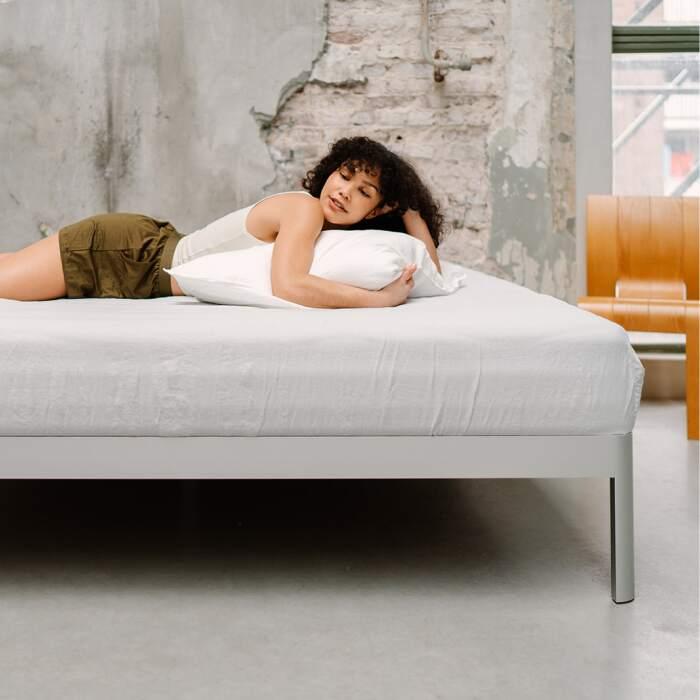More than 1.5 million mattresses are discarded in the Netherlands every year. Most of them end up in incinerators. A recycling drama, says industrial designer Frans de la Haye (80), known for the Auronde, the Auping bed that has been a bestseller for fifty years.
For many years, De la Haye had an idea for a sustainable, well-ventilated mattress without non-recyclable foam layers. At a German company he once saw insoles made of an airy yet sturdy polyester fabric. A much thicker version of that fabric seemed to him to be a suitable basis for a durable mattress. After all, polyester is easy to recycle.
Because De la Haye kept hitting walls, he decided to seek help. Eduard Zanen was at the top of his list of entrepreneurs to approach. Zanen responded immediately to his text message, De la Haye says. The contact led to the founding of Ubed four years ago, a start-up with Zanen as an investor. After a long development process, the first fully recyclable mattresses have recently become available for sale: mattresses with a thick polyester top layer on a layer of pocket springs. The removable mattress cover can be washed in the washing machine, the top layer can be rinsed in the shower. The (non-glued) parts can be replaced at the end of their lifespan, so that the mattresses can last a lifetime. The old parts are recyclable.
Ubed claims to make mattresses with better moisture and air permeability than foam mattresses. “The polyester top layer is therefore more hygienic and pleasant to use,” says De la Haye.
The start-up has just received a patent for mattresses with built-in air conditioning in the foot end. Thanks to sensors, the mattress can be cooled and heated. An air conditioning mattress not only offers more comfort, but also makes air conditioning in the bedroom unnecessary. “Better for the environment,” says De la Haye. The launch of this mattress will follow later this year.








